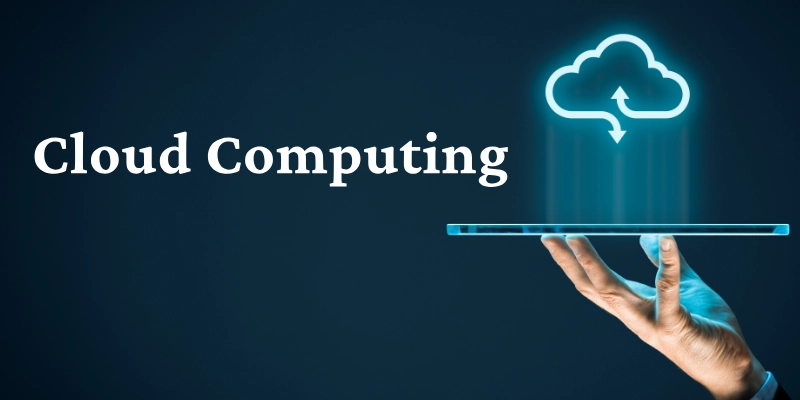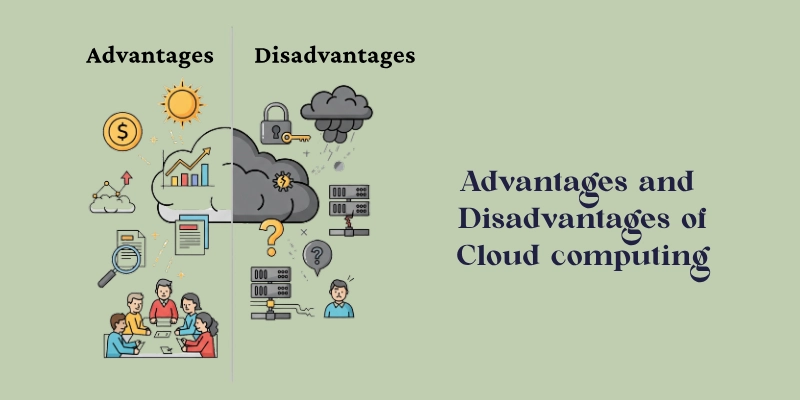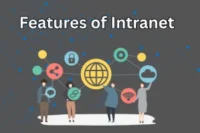What is Cloud Computing? Definition, Types, Benefits & Examples
Published: 19 Sep 2025
In today’s digital world, almost everything we use whether it’s streaming Netflix, storing photos on Google Drive, or working remotely on Microsoft Teams runs on the cloud. But what exactly is cloud computing?
In simple words, cloud computing is the delivery of computing services like storage, servers, databases, software, and networking over the internet (“the cloud”). Instead of buying and maintaining physical hardware, you can access powerful resources online, only paying for what you use.
This guide will explain the definition, types, benefits, challenges, examples, and future of cloud computing, so you can fully understand why it has become the backbone of modern technology.
What is Cloud Computing?
Cloud computing means using remote servers hosted on the internet to store, manage, and process data instead of relying on your local computer or office servers.
- Technical definition: Cloud computing is an on-demand availability of computing resources (servers, storage, databases, applications) delivered over the internet with pay-as-you-go pricing.
- Simple definition: It’s like renting computing power and storage instead of owning it.

Why Cloud Computing Matters
Cloud computing is important because it has changed how individuals, businesses, and governments operate.
- Cost efficiency – You only pay for what you use.
- Scalability – Businesses can quickly expand or shrink resources.
- Collaboration – Remote teams can work together in real-time.
- Global accessibility – Services are available from anywhere with an internet connection.
Real-world examples:
- Netflix uses cloud computing to stream content globally.
- Google Drive & Dropbox allow individuals to store and share files.
- Zoom & Microsoft Teams enable remote communication.
Types of Cloud Computing
There are several deployment models of cloud computing:
- Public Cloud – Services are offered over the public internet and shared across organizations (e.g., AWS, Google Cloud).
- Private Cloud – Dedicated infrastructure for one organization, offering higher security and control.
- Hybrid Cloud – Combination of public and private clouds for flexibility.
- Multi-Cloud – Using multiple cloud providers to avoid dependency on one vendor.
Cloud Computing Service Models
Cloud services are usually divided into three main categories:
- IaaS (Infrastructure as a Service)
- Provides virtualized computing resources like servers, storage, and networking.
- Example: Amazon EC2, Google Compute Engine.
- PaaS (Platform as a Service)
- Provides a platform for developers to build and deploy applications without worrying about hardware.
- Example: Google App Engine, Heroku.
- SaaS (Software as a Service)
- Provides ready-to-use software applications over the internet.
- Example: Gmail, Dropbox, Microsoft 365.
Benefits of Cloud Computing
Businesses and individuals adopt the cloud for many reasons:
- Cost savings – No need to buy and maintain expensive servers.
- Scalability – Scale resources up or down instantly.
- Reliability – Data backup and disaster recovery built-in.
- Security – Advanced encryption and monitoring tools.
- Faster innovation – Deploy applications quickly without hardware delays.

Challenges of Cloud Computing
While the cloud offers many advantages, it comes with challenges:
- Data security concerns – Risk of cyberattacks and breaches.
- Downtime risks – Internet outages may disrupt access.
- Compliance issues – Industries like healthcare and finance must follow strict regulations.
- Vendor lock-in – Hard to switch providers once deeply integrated.
Real-Life Examples of Cloud Computing
Cloud computing is everywhere:
- Personal use: Google Drive, iCloud, OneDrive for storage.
- Business use: Netflix uses AWS for streaming; Shopify uses cloud hosting for e-commerce.
- Industry impact:
- Healthcare → Cloud helps with patient data management.
- Finance → Banks use cloud for fraud detection.
- Education → Online learning platforms run on the cloud.
Future of Cloud Computing
The future of cloud computing looks even more innovative:
- AI + Cloud – Cloud platforms integrate artificial intelligence and machine learning services.
- Edge Computing + 5G – Data processing closer to users for faster performance.
- Green Computing – Providers focus on renewable energy and sustainability.
Cloud Computing Providers (Market Leaders)
Some of the biggest cloud service providers are:
- Amazon Web Services (AWS) – Market leader with broad services.
- Google Cloud Platform (GCP) – Strong in data analytics and AI.
- Microsoft Azure – Popular with enterprise businesses.
- Alibaba Cloud – Growing rapidly in Asia.
Conclusion
Cloud computing is no longer a trend, it’s the foundation of modern technology. From personal storage to enterprise applications, it powers businesses, entertainment, and even governments.
With benefits like cost savings, scalability, and innovation, and future trends like AI and edge computing, cloud computing will only grow in importance.
If you’re new, start by exploring free tiers from AWS, Google Cloud, or Microsoft Azure and experience the power of the cloud for yourself.
FAQs
Here are some frequently asked questions about cloud computing to help you understand the basics, advantages, and real-world uses in more detail.
Cloud computing means storing and using data, applications, or servers on the internet instead of relying on your personal computer. It allows you to access files, apps, and services from anywhere, anytime, with just an internet connection.
The three main types are Public Cloud, Private Cloud, and Hybrid Cloud. Public clouds are shared by multiple users, private clouds are dedicated to a single organization, and hybrid clouds combine both for flexibility and control.
Yes, most cloud service providers use encryption, firewalls, and multi-factor authentication to protect data. However, risks like cyberattacks or human error still exist, so proper security practices are essential.
Popular examples include Google Drive, Dropbox, Zoom, Netflix, and Gmail. These services let users store files, stream movies, communicate remotely, and share data without needing physical storage or servers.
Some disadvantages include potential data privacy issues, internet dependency, and vendor lock-in. If the internet connection fails, access to cloud services can be interrupted, which may disrupt work or business.
Cloud computing is widely used by businesses, startups, educational institutions, and individuals. Companies like Netflix, Amazon, and Microsoft depend heavily on cloud platforms, while students and freelancers use them for storage and collaboration.
The future lies in AI-powered cloud services, edge computing, and sustainable green cloud solutions. With the rise of 5G, cloud services will become faster, more secure, and more accessible across the globe.

- Be Respectful
- Stay Relevant
- Stay Positive
- True Feedback
- Encourage Discussion
- Avoid Spamming
- No Fake News
- Don't Copy-Paste
- No Personal Attacks

- Be Respectful
- Stay Relevant
- Stay Positive
- True Feedback
- Encourage Discussion
- Avoid Spamming
- No Fake News
- Don't Copy-Paste
- No Personal Attacks





